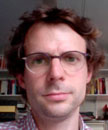
Introduced by the late Per Bak and his colleagues, self-organized criticality (SOC) has been one of the most stimulating concepts to come out of statistical mechanics and condensed matter theory in the last few decades, and has played a significant role in the development of complexity science. SOC, and more generally fractals and power laws, have attracted much comment, ranging from the very positive to the polemical. The other papers (Aschwanden et al., 2014; McAteer et al., 2014; Sharma et al., 2015) in this special issue showcase the considerable body of observations in solar, magnetospheric and fusion plasma inspired by the SOC idea, and expose the fertile role the new paradigm has played in approaches to modeling and understanding multiscale plasma instabilities.








